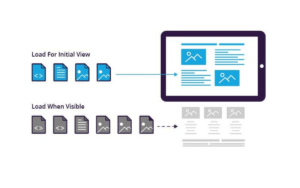WordPress is undoubtedly one of the most popular content management systems (CMS) on the internet, powering millions of websites around the globe. However, as your WordPress site grows in content and functionality, ensuring optimal performance becomes crucial. A sluggish website can lead to higher bounce rates, lower search engine rankings, and a poor user experience. In this comprehensive guide, we will explore various strategies and techniques to optimize your WordPress site and enhance its performance.
Why Optimizing WordPress Performance is Important
A slow WordPress website is directly linked to a decline in traffic and revenue. According to Kissmetrics, up to 40% of visitors may leave if a page takes more than three seconds to load. Whether your goal is to boost page views, generate leads, convert customers, or achieve any other objective, optimizing your site for an optimal user experience is crucial.
Furthermore, the performance of your WordPress site can significantly impact its search engine rankings. Google considers various factors, including speed and user engagement, when determining site rankings. A fast-loading, user-friendly site signals to search engines that you prioritize visitor experience, potentially resulting in higher placement in search engine results.
It’s essential to recognize that WordPress optimization is an ongoing process. As your site matures and accumulates more content, regular maintenance and optimization become increasingly critical to sustaining optimal performance and user satisfaction.
How to Optimize Your WordPress Site’s Performance:
Now that you understand the importance of WordPress optimization, let’s take a look at how to do it. Below are twelve ways to optimize your WordPress site.
Choose a Lightweight Theme:
When considering a custom WordPress design, it’s crucial to prioritize the selection of a theme that aligns seamlessly with your specific needs. Opting for a lightweight and well-coded theme is paramount for optimal site performance. This approach ensures that your website not only meets design requirements but also operates efficiently without unnecessary bloat.
It’s prudent to steer clear of themes adorned with excessive features and functionalities that might be superfluous for your objectives. Instead, focus on a theme that strikes the right balance between aesthetics and functionality, tailored to your unique requirements. This meticulous theme selection process is integral to crafting a bespoke WordPress design that resonates with your brand or content, providing a user-friendly experience without compromising performance.
Optimize Images:
When optimizing your e-commerce website for SEO, it’s imperative to address the impact of large image files on site speed. Incorporating image compression plugins or tools is a crucial step to reduce file sizes without sacrificing quality. This not only enhances your site’s loading speed but also contributes to a positive user experience, a vital factor in SEO rankings.
Furthermore, implementing lazy loading for images is another effective strategy. By loading images only as they enter the user’s viewport, you can further optimize page loading times. This not only aligns with SEO best practices but also ensures that your e-commerce site provides a smooth and efficient browsing experience for visitors. Balancing image quality and loading speed through these techniques is key to boosting your e-commerce website’s search engine visibility and overall performance.
Implement Browser Chaching:
When partnering with a WordPress development company, optimizing your website for performance is paramount. Implementing browser caching is a crucial strategy to enhance page load times and improve overall user experience. Browser caching involves storing frequently accessed resources in a user’s browser, thereby reducing the need to download them again during subsequent visits.
To leverage browser caching effectively on your WordPress site, consider employing dedicated plugins such as W3 Total Cache or WP Super Cache. These plugins seamlessly integrate with your WordPress platform, allowing you to configure and enable browser caching effortlessly. By doing so, you not only ensure a faster and more efficient user experience but also align with best practices for WordPress development. This optimization contributes to improved search engine rankings and user satisfaction, essential factors for the success of your WordPress-powered website.
Enable Content Delivery Network (CDN):
When engaged in WordPress SEO plugins development, it’s crucial to address website performance optimization. Implementing a Content Delivery Network (CDN) is a key strategy to enhance the distribution of your site’s static content, including images, stylesheets, and scripts. A CDN disperses these resources across multiple servers globally, allowing users to access them from a server closer to their geographical location.
This geographical distribution minimizes latency, ultimately improving load times and user experience. To integrate a CDN seamlessly into your WordPress website, you can explore and develop plugins that facilitate the connection with popular CDN services such as Cloudflare, MaxCDN, or Amazon CloudFront. By leveraging a CDN in conjunction with your SEO plugins, you not only optimize site performance but also contribute to improved search engine rankings and overall user satisfaction, reinforcing the effectiveness of your WordPress SEO strategy.
Optimize Database Performance:
Ensure your WordPress website runs smoothly by routinely cleaning and optimizing its database. Utilize plugins like WP-Optimize to automate tasks such as eliminating post revisions, spam comments, and other redundant data. This maintenance not only enhances efficiency but also improves the overall performance of your site. By regularly tidying up, you free up valuable space and contribute to faster loading times. Invest in the health of your website for a better user experience and to maintain optimal functionality.
Minimize HTTP Requests:
Optimize your website’s performance by reducing the number of HTTP requests needed for various elements. Combine CSS and JavaScript files to consolidate requests, enhancing loading times. Employ CSS sprites to merge multiple images into a single file, minimizing individual image requests. Additionally, limit external scripts to further streamline your webpage and improve overall user experience. By implementing these strategies, you enhance the efficiency of your site and create a faster, more responsive online environment.
Utilize GZIP Compression:
Boost your website’s speed by enabling GZIP compression, a technique that reduces the size of your files before delivering them to users’ browsers. This is particularly beneficial for users with slower internet connections, significantly cutting down on loading times. Many hosting providers and caching plugins seamlessly support GZIP compression, making it an easy and effective way to enhance your site’s performance. By implementing this compression method, you not only improve user experience but also contribute to efficient data transmission across the web.
Optimize WordPress Database Queries:
Addressing poorly optimized database queries is crucial for faster page load times. Employ tools like Query Monitor to pinpoint and optimize sluggish database queries efficiently. This plugin provides valuable insights into your site’s performance, helping you enhance its responsiveness. For more complex optimizations, consider enlisting the expertise of a developer who can implement advanced strategies tailored to your specific needs. With proper database query optimization, you pave the way for a smoother user experience and improved overall website efficiency.
Choose a Reliable Hosting Provider:
Choose your hosting provider wisely, as it significantly influences your website’s performance. Opt for a reputable company that provides fast and reliable servers, ensuring a seamless user experience. Managed WordPress hosting is a valuable option, offering dedicated support and optimized server configurations specifically designed for WordPress sites. This type of hosting can alleviate technical burdens, allowing you to focus on creating content and running your website while enjoying enhanced speed and reliability. Prioritize a hosting solution that aligns with your site’s needs for optimal performance and user satisfaction.

Implement Content Lazy Loading:
For E-Commerce SEO, implementing lazy loading is a strategic move to elevate the user experience on your online store. This technique delays the loading of non-essential content such as product images and videos until users scroll down, leading to a substantial improvement in initial page load times. This is especially crucial for e-commerce sites where visual content plays a significant role. The use of lazy loading not only enhances the browsing experience but also minimizes data transfer during the critical first visit, catering to users with slower internet connections. Consider integrating this user-friendly optimization to strike a balance between performance and content delivery, contributing positively to your ecommerce website’s SEO efforts.
Update WordPress Core, Themes, and Plugins:
Staying proactive with updates not only strengthens your website’s security but also contributes to optimal performance. Regular updates from developers often include bug fixes, performance enhancements, and added features. By keeping your WordPress core, themes, and plugins up to date, you ensure that your site is equipped with the latest improvements and fortified against potential vulnerabilities. Automate update processes when possible, and regularly check for compatibility with the latest versions to maintain a seamless and secure online presence. Prioritize this practice to benefit from the ongoing evolution and refinement of your website’s components.
Monitor and Analyze Performance:
Regularly monitoring your site’s performance is crucial for maintaining optimal user experiences. Tools like Google PageSpeed Insights, GTmetrix, and Pingdom offer insightful metrics and recommendations to help you identify areas for improvement. By leveraging these tools, you can pinpoint performance bottlenecks, assess page loading times, and receive actionable suggestions for further optimizations. Implementing the recommended changes can lead to improved website speed, better search engine rankings, and enhanced overall user satisfaction. Make it a habit to use these tools as part of your ongoing website maintenance strategy to ensure your site consistently delivers optimal performance.
Conclusion:
By implementing these strategies, you can significantly enhance the performance of your WordPress site, providing a better user experience and potentially improving your search engine rankings. Remember that optimization is an ongoing process, and regular maintenance is essential to keep your site running smoothly. Stay proactive, monitor your site’s performance, and adapt your strategy as your website continues to grow and evolve.
Stay connected with NuCitrus for the best WordPress website Development company Philadelphia & SEO strategies for your business in Pennsylvania.




